Home>Garden Essentials>Why Are Legumes Important In Crop Rotation
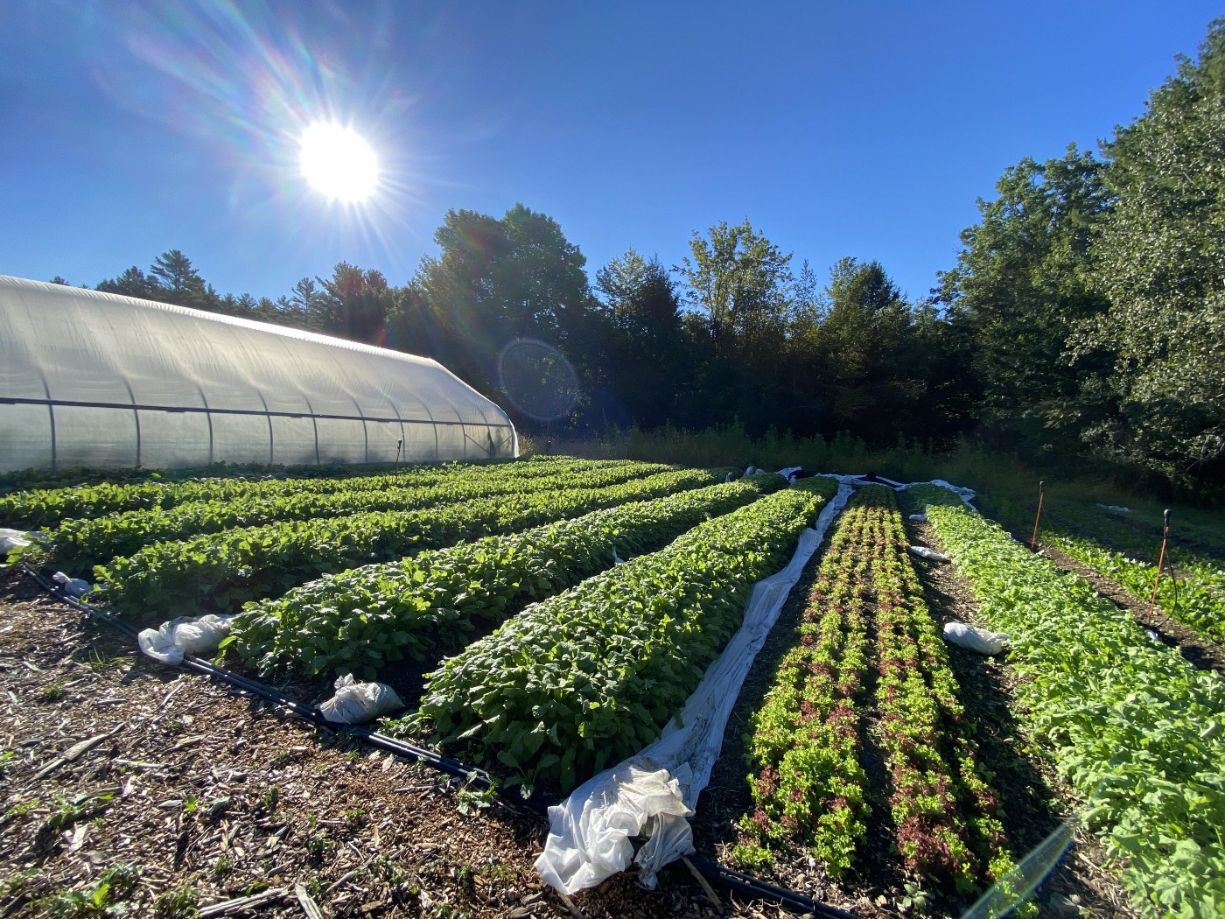

Garden Essentials
Why Are Legumes Important In Crop Rotation
Modified: March 20, 2024
Discover why legumes are crucial in crop rotation and how they benefit your garden. Learn how legumes fix nitrogen and improve soil health.
(Many of the links in this article redirect to a specific reviewed product. Your purchase of these products through affiliate links helps to generate commission for Storables.com, at no extra cost. Learn more)
Introduction
Crop rotation is a practice that has been utilized in agriculture for centuries. It involves the systematic planting of different crops on the same piece of land over a period of time. This practice is essential for maintaining soil health, preventing nutrient depletion, and managing pests and diseases. One key component of successful crop rotation is the inclusion of legumes in the rotation plan.
Legumes, such as peas, beans, lentils, and clover, are a group of plants that have unique abilities to fix nitrogen from the atmosphere into a form that is usable by plants. This process, known as nitrogen fixation, helps to replenish nutrients in the soil, benefiting subsequent crops in the rotation. In addition to nitrogen fixation, legumes offer numerous other benefits that make them valuable additions to crop rotation plans.
In this article, we will explore the importance of crop rotation in agriculture and delve into the specific benefits of including legumes in rotation plans. By understanding the advantages of incorporating legumes, farmers and gardeners can make informed decisions to improve soil fertility, manage pests and diseases, and ultimately, enhance crop yields.
So, why are legumes important in crop rotation? Let’s find out.
Key Takeaways:
- Including legumes like peas and beans in crop rotation helps farmers by naturally replenishing soil nutrients, reducing the need for expensive fertilizers, and improving overall crop yields.
- By planting legumes in rotation, farmers can naturally manage pests, suppress weeds, and save money on pesticides, leading to healthier crops and more sustainable farming practices.
Read more: Why Is Crop Rotation Important?
Definition of Crop Rotation
Crop rotation is a systematic agricultural practice that involves the sequential planting of different crops in a specific order on the same piece of land. This rotation schedule is carefully designed to maximize the productivity of the soil while minimizing the risks of pest and disease build-up.
The concept of crop rotation is rooted in the principle of diversification. By alternating the types of crops grown in a particular area over time, farmers can break pest and disease cycles, replenish soil nutrients, and promote overall soil health.
Crop rotation typically follows a specific pattern, often involving three or more different crop types. For example, a common rotation sequence might involve growing corn in the first year, followed by legumes like soybeans or peas in the second year, and then rotating to a different crop like wheat or barley in the third year. This rotation cycle can be repeated over several years, depending on the specific needs of the crops and the condition of the soil.
The primary objective of crop rotation is to maintain or improve the quality of the soil, thus ensuring the long-term sustainability of agricultural practices. Different crops have varying nutrient requirements, growth patterns, and effects on soil structure. By changing the crop type each year, farmers can prevent the depletion of specific nutrients from the soil and reduce the build-up of pests and diseases that target a particular crop.
In addition to these benefits, crop rotation also helps to enhance water efficiency, reduce erosion, and promote biodiversity. By diversifying plant species, crop rotation creates a balanced ecosystem that supports beneficial insects, birds, and microorganisms.
Overall, crop rotation is a fundamental practice in agriculture that aims to maximize productivity and sustainability. Through thoughtful planning and implementation, farmers can maintain soil health, improve yields, and reduce reliance on synthetic inputs like fertilizers and pesticides. Including legumes in crop rotation schedules is a key aspect of this practice, as they offer unique advantages that contribute to the overall success of the rotation system.
Importance of Crop Rotation in Agriculture
Crop rotation plays a crucial role in sustainable agriculture, providing numerous benefits that contribute to the long-term health and productivity of the land. Here are some key reasons why crop rotation is important in agriculture:
1. Nutrient Management: Different crops have varying nutrient requirements. By rotating crops, farmers can prevent the depletion of specific nutrients from the soil. For example, legumes are known for their ability to fix nitrogen from the atmosphere and convert it into a usable form for plants. By including legumes in the rotation, nitrogen levels in the soil can be replenished naturally, reducing the need for synthetic fertilizers.
2. Soil Health: Continuous planting of the same crop in the same area can lead to the accumulation of pests, diseases, and weeds specific to that crop. Crop rotation disrupts these cycles, reducing the risk of outbreaks and enhancing soil health. Additionally, different crops have different root structures, which can improve soil structure and increase organic matter content, leading to better drainage, water retention, and overall soil fertility.
3. Pest and Disease Management: Crop rotation is an effective method for reducing pest and disease pressure. By interrupting the life cycles of pests and pathogens that target specific crops, farmers can lower their populations and decrease the risk of infestations. This can help minimize the reliance on chemical pesticides, reducing the environmental impact and promoting sustainable practices.
4. Weed Control: Crop rotation can help suppress weeds naturally. Different crops have diverse growth habits and canopy structures, which can shade and outcompete weeds. Additionally, some crops release natural compounds that inhibit weed growth. By rotating crops, farmers can disrupt weed life cycles and reduce the prevalence of herbicide-resistant weeds.
5. Water Efficiency: Crop rotation can improve water use efficiency by reducing the amount of water lost to evaporation and runoff. Different crops have different water requirements, allowing farmers to optimize water usage based on the seasonal conditions and available water resources.
6. Biodiversity and Ecosystem Services: Crop rotation promotes biodiversity by providing a diverse range of habitats for beneficial insects, birds, and microorganisms. This biodiversity contributes to natural pest control, pollination, and nutrient cycling, enhancing overall ecosystem services.
By implementing crop rotation practices, farmers can create a sustainable and resilient agricultural system. It reduces the reliance on synthetic inputs, promotes soil health, manages pests and diseases, improves water efficiency, and supports biodiversity. Including legumes in crop rotation plans further enhances these benefits, making crop rotation an essential practice for modern agriculture.
What are Legumes?
Legumes are a diverse group of plants that belong to the Fabaceae family, commonly known as the pea or bean family. They are characterized by their ability to fix nitrogen from the atmosphere through a symbiotic relationship with nitrogen-fixing bacteria, known as rhizobia, which reside in specialized root nodules. This unique trait sets legumes apart from other plant families and makes them invaluable in agriculture and sustainable farming systems.
Legumes come in a variety of forms, including annuals, perennials, and shrubs. Some well-known legume species include common beans, peas, lentils, chickpeas, soybeans, alfalfa, and clovers. The family encompasses both human food crops and forage crops used to feed livestock, making them important in both our diets and overall agricultural systems.
Legumes are known for their high protein content, making them a valuable source of plant-based protein for vegetarian and vegan diets. They are also rich in dietary fiber, vitamins, minerals, and phytochemicals. Legumes offer a wide range of culinary versatility and are used in many traditional dishes worldwide, from hummus and dal to chili and stir-fries.
In addition to their nutritional value, legumes have significant agronomic benefits. As mentioned earlier, legumes have the fascinating ability to form a mutualistic relationship with nitrogen-fixing bacteria. This process allows them to convert atmospheric nitrogen into a form (ammonia) that is readily available to plants. Through this biological nitrogen fixation, legumes enhance soil fertility and reduce the need for synthetic nitrogen fertilizers. The fixed nitrogen they provide benefits not only themselves but also neighboring or subsequent crops in the rotation.
Furthermore, legumes have deep-reaching taproots that help break up compacted soil, improve its structure, and enhance water infiltration and retention. Additionally, legume residues left after harvest can contribute to organic matter accumulation, which leads to improved soil health and nutrient cycling.
Legumes also play a crucial role in rotation systems due to their ability to suppress weeds. They can outcompete weeds, reducing the need for herbicides and promoting more sustainable weed management practices.
In summary, legumes are a diverse and versatile group of plants with numerous benefits. They provide essential nutrients, support sustainable farming practices through nitrogen fixation and soil improvement, and contribute to weed control. Including legumes in crop rotation plans can help enhance soil fertility, reduce input reliance, and promote overall agricultural sustainability.
Benefits of Including Legumes in Crop Rotation
Including legumes in crop rotation plans offers a wide range of benefits that contribute to the overall health and productivity of agricultural systems. Here are some key advantages of integrating legumes into crop rotations:
1. Nitrogen Fixation: Legumes have the remarkable ability to form a symbiotic relationship with nitrogen-fixing bacteria, allowing them to convert atmospheric nitrogen into a form that plants can utilize. This process, known as biological nitrogen fixation, replenishes soil nitrogen levels and reduces the need for synthetic nitrogen fertilizers. The nitrogen fixed by legumes benefits not only the legume crop itself but also neighboring or subsequent crops in the rotation, promoting enhanced growth and yields.
2. Soil Fertility Improvement: Legumes are an excellent source of organic matter, as their residues are rich in nutrients and decompose readily. When legume plants are incorporated into the soil after harvest, they contribute to the build-up of organic matter, improving soil structure, water-holding capacity, and nutrient availability. This process enhances overall soil fertility, benefiting subsequent crops in the rotation.
3. Weed Suppression: Many legume species have a vigorous growth habit and dense canopy, which helps suppress weed growth by shading and outcompeting them for resources such as sunlight, water, and nutrients. This natural weed suppression reduces the reliance on herbicides and promotes more sustainable weed management practices.
4. Pest and Disease Management: Legumes have been found to exhibit resistance or tolerance to certain pests and diseases, reducing their impact on both legume and subsequent crops in the rotation. By including legumes, farmers can break pest and disease cycles, preventing the build-up of specific pathogens or insect populations that target particular crops.
5. Biodiversity and Ecosystem Services: Legumes promote biodiversity by attracting beneficial insects, such as bees and butterflies, that aid in pollination. This ensures better fruit set and seed production in both legume and non-legume crops. By supporting diverse and balanced ecosystems, legumes contribute to enhanced ecosystem services, such as natural pest control and nutrient cycling.
6. Economic Benefits: The incorporation of legumes in crop rotation can lead to significant economic advantages for farmers. The reduced need for synthetic fertilizers, herbicides, and pesticides, combined with improved soil fertility and pest management, can result in cost savings. Additionally, the ability to grow high-value legume crops alongside other crops adds diversity to farm income and market options.
Incorporating legumes into crop rotation plans is a win-win situation for both farmers and the environment. By harnessing the nitrogen-fixing abilities of legumes, improving soil fertility, suppressing weeds, managing pests and diseases, promoting biodiversity, and reducing input costs, farmers can achieve sustainable agricultural practices and achieve better overall farm productivity.
Read more: Why Crop Rotation Is Important
Nitrogen Fixation by Legumes
One of the key benefits of including legumes in crop rotation is their remarkable ability to fix atmospheric nitrogen. Nitrogen is an essential nutrient required by plants for growth and productivity. However, nitrogen gas (N2) that makes up about 78% of the Earth’s atmosphere is not directly usable by most plants. This is where legumes come into play.
Legumes have a unique symbiotic relationship with nitrogen-fixing bacteria, known as rhizobia. These bacteria reside in specialized root nodules that develop on legume plants. In this symbiosis, the legume supplies energy in the form of carbohydrates to the rhizobia, while the bacteria provide the legume with fixed nitrogen in the form of ammonia (NH3).
This process, called nitrogen fixation, allows legumes to convert atmospheric nitrogen into a form that is biologically available to plants. The ammonia produced by rhizobia is then converted to nitrate (NO3-) by soil microorganisms, making it accessible to plants’ root systems.
The ability of legumes to fix atmospheric nitrogen provides several important benefits:
1. Enhanced Soil Fertility: Nitrogen is a critical nutrient for plant growth and development. By fixing atmospheric nitrogen, legumes contribute to the overall nitrogen content in the soil. This reduces the need for synthetic nitrogen fertilizers and promotes sustainable agricultural practices. Additionally, the fixed nitrogen remains in the soil even after the legume crop is harvested, benefiting subsequent crops in the rotation.
2. Reduced Environmental Impact: Synthetic nitrogen fertilizers are commonly used in agriculture to supply plants with the necessary nitrogen. However, their production and application contribute to greenhouse gas emissions, water pollution, and soil degradation. By relying on nitrogen fixation by legumes, farmers can reduce their dependence on these fertilizers, thereby mitigating potential environmental harm.
3. Increased Crop Yield: Nitrogen is crucial for plant growth, particularly in terms of leaf development, photosynthesis, and overall biomass production. By incorporating legumes in crop rotation, farmers can provide subsequent crops with a natural and consistent source of fixed nitrogen, leading to improved crop yields and quality.
4. Improved Nutrient Cycling: Legumes contribute to the cycling of nutrients in agricultural systems. When legume residues, such as leaves and roots, are returned to the soil through crop residue management or decomposition, they release the fixed nitrogen, making it available for other plants. This nutrient recycling enhances the overall efficiency and sustainability of nutrient use in the farming system.
5. Economic Benefits: Nitrogen fixation by legumes can lead to significant cost savings for farmers. By reducing the need for synthetic nitrogen fertilizers, farmers can lower their input costs and improve profitability. Additionally, the reliance on biological nitrogen fixation reduces the dependence on external inputs, enhancing the long-term economic sustainability of farming operations.
Incorporating legumes in crop rotation systems offers a natural and efficient way to enhance soil fertility, reduce environmental impact, and improve crop productivity. Through their incredible ability to fix atmospheric nitrogen, legumes have become valuable assets in sustainable farming practices, ensuring both economic and environmental benefits for farmers and agricultural systems as a whole.
Legumes are important in crop rotation because they fix nitrogen in the soil, improving soil fertility and reducing the need for synthetic fertilizers. This helps to maintain soil health and increase crop yields.
Improvement of Soil Fertility through Legume Rotation
One of the significant benefits of incorporating legumes in crop rotation plans is their ability to improve soil fertility. Legumes offer a natural and sustainable solution to replenish essential nutrients in the soil, enhance soil structure, and promote overall soil health. Here are several ways in which legume rotation improves soil fertility:
1. Nitrogen Enrichment: Legumes have the unique ability to form a symbiotic relationship with nitrogen-fixing bacteria. Through this symbiosis, legumes can convert atmospheric nitrogen into a form that is readily available to plants and other organisms in the soil. The process, called nitrogen fixation, results in the accumulation of nitrogen-rich organic matter in the form of roots, nodules, and plant residues. When legume crops are incorporated into the soil, this organic matter releases the fixed nitrogen, enriching the soil and providing a valuable source of nitrogen for subsequent crops.
2. Organic Matter Accumulation: Legumes contribute to the build-up of organic matter in the soil. Legume residues, such as leaves, stems, and root systems, are rich in nutrients and decompose relatively quickly, adding organic matter to the soil. Organic matter improves soil structure, increases water-holding capacity, and enhances nutrient retention. It also serves as a source of energy and habitat for beneficial soil microbes and organisms, contributing to a thriving and balanced soil ecosystem.
3. Carbon Sequestration: Legume crops have the ability to fix atmospheric carbon dioxide (CO2) through photosynthesis. As they grow and accumulate biomass, legumes capture and store carbon in their tissues. This process, known as carbon sequestration, helps to reduce greenhouse gas emissions and mitigates climate change. Additionally, the incorporation of legume residues into the soil further enhances carbon storage in the form of humus, a stable form of soil organic matter.
4. Improved Soil Structure: The deep-reaching taproots of many legume crops help break up compacted soil, improving soil structure and aeration. This allows for better water infiltration, root penetration, and nutrient movement within the soil profile. Improved soil structure promotes root development, enhances nutrient availability, and reduces the risk of waterlogging, erosion, and nutrient leaching.
5. Nutrient Cycling: As legumes incorporate nitrogen into the soil, they also facilitate the cycling of other essential nutrients. The organic matter produced by legume residues, combined with the activities of soil microorganisms, enhances nutrient cycling and increases the availability of nutrients to subsequent crops. This reduces the reliance on external inputs and promotes a more sustainable and efficient nutrient management strategy.
6. pH Regulation: Some legume species, such as clovers, have the ability to fix atmospheric nitrogen even under acidic soil conditions. By including these acid-tolerant legumes in rotation, farmers can improve soil pH over time, making it more suitable for a wider range of crops.
By incorporating legumes into crop rotation plans, farmers can improve soil fertility, enhance nutrient availability, and promote a healthy and productive soil ecosystem. The combination of nitrogen fixation, organic matter accumulation, carbon sequestration, improved soil structure, and efficient nutrient cycling makes legume rotation a valuable practice for sustainable agriculture and long-term soil health.
Pest and Disease Management with Legume Rotation
Incorporating legumes into crop rotation plans offers effective pest and disease management strategies, reducing the reliance on synthetic pesticides and promoting a more sustainable approach. Legume rotation breaks pest and disease cycles, introduces natural biological controls, and provides physical barriers. Here are several ways in which legume rotation contributes to pest and disease management:
1. Disruption of Pest and Disease Life Cycles: Continuous cultivation of the same crop in the same area can result in the build-up of pests and diseases specific to that crop. By rotating crops and including legumes, farmers can disrupt the life cycles of pests and diseases. Different crops have different susceptibility to specific pests and diseases, and by breaking the cycle, farmers can minimize the risk of infestations. This approach reduces the need for pesticide applications and helps to prevent the development of pesticide resistance in pest populations.
2. Biological Control: Legumes can attract and support beneficial insects, birds, and microorganisms that act as natural predators or parasites of pests. For example, legume flowers attract beneficial insects like ladybugs, lacewings, and parasitic wasps, which feed on or lay their eggs in pest larvae. This natural biological control assists in managing pests and keeps their populations in check. By providing floral resources and shelter, legumes offer a habitat for beneficial insects, fostering a diverse and balanced ecosystem.
3. Allelopathic Effects: Some legume species produce compounds that have allelopathic effects, which inhibit the growth or development of specific pests or pathogens. For example, certain legumes release chemical compounds that can suppress the germination or growth of weed seeds. This natural weed control reduces competition and allows subsequent crops to establish more easily.
4. Physical Barrier and Competition: Legumes with vigorous growth habits and dense canopies can serve as physical barriers against pests. A dense legume canopy can shade out and physically restrict the movement and access of pests such as aphids and certain caterpillars. In addition, legumes can compete with weeds for resources, limiting their growth and reducing weed pressure in the field.
5. Disease Suppression: Rotating non-host legume crops in between susceptible crop rotations helps to suppress diseases that are specific to certain crops. Different legumes have varying disease resistance, and by interplanting legume crops, farmers can interrupt disease cycles and reduce the severity and incidence of diseases. This approach helps to prevent disease build-up in the soil and minimize the risk of disease outbreaks, increasing the overall health of the rotation system.
6. Soil Health Improvement: The inclusion of legumes in crop rotation plans improves soil health, which in turn enhances the resilience of plants against pests and diseases. Healthy soil with good nutrient availability, beneficial microbes, and improved structure ensures plants have optimal growing conditions and better defense mechanisms against pests and diseases.
By utilizing legume rotation strategies, farmers can effectively manage pests and diseases while minimizing the use of synthetic pesticides. The combination of disrupting life cycles, promoting biological control, utilizing allelopathic effects, creating physical barriers, and improving soil health creates a more balanced and sustainable approach to pest and disease management in agriculture.
Weed Control with Legumes in Crop Rotation
Effective weed control is a crucial aspect of crop production, as weeds compete with crops for resources and can significantly impact yield and quality. Incorporating legumes into crop rotation plans offers natural and sustainable weed control strategies. Here are several ways in which legumes contribute to weed management in crop rotation:
1. Competition for Resources: Legumes have a vigorous growth habit and a capacity to compete with weeds for essential resources such as sunlight, water, and nutrients. Their dense canopy and rapid growth can shade out and outcompete weed seedlings, reducing weed establishment and growth. By planting legumes in rotation, farmers create a competitive environment that inhibits weed development and limits their impact on subsequent crops.
2. Allelopathic Effects: Some legume species release chemical compounds that have allelopathic effects, inhibiting the germination and growth of weed seeds. These compounds can suppress weed seed germination or interfere with their nutrient uptake, reducing weed emergence and population densities. By planting allelopathic legumes in rotation, farmers can naturally suppress weed growth without relying solely on herbicides.
3. Nutrient Competition: Legumes have high nutrient requirements and can efficiently utilize nutrients from the soil. By incorporating legumes in crop rotations, they compete with weeds for essential nutrients, depriving weeds of the resources they need to thrive. This nutrient competition weakens weed growth and reduces weed vigor, resulting in better weed control and suppression.
4. Smothering Effect: Some legume species with a spreading growth habit, such as clovers, can form a dense ground cover. This smothering effect effectively suppresses weed growth by limiting their access to light and blocking their ability to establish and grow. This ground cover also acts as a physical barrier, preventing weed seeds from coming into contact with the soil and germinating.
5. Organic Mulch: Legume residues, such as leaves, stems, and roots, can be used as organic mulch to suppress weed growth. After legume crops are harvested or terminated, the residues can be left on the soil surface as a natural mulch. This mulch acts as a physical barrier, inhibiting weed seed germination and reducing weed emergence.
6. Crop Rotation Timing: Timing the rotation to include legumes at specific intervals can disrupt the life cycles of perennial weeds. Legumes can be strategically planted to coincide with the growth and reproductive stages of perennial weeds, allowing farmers to control these persistent weeds more effectively. By interrupting the weed’s life cycles, farmers can prevent seed production and reduce the reinfestation of perennial weeds in subsequent crops.
By incorporating legumes into crop rotation plans, farmers can employ effective and sustainable weed control strategies. The combination of competition for resources, allelopathic effects, nutrient competition, smothering effects, organic mulch, and strategic timing disrupts weed growth and reduces their impact on crop yields. This natural weed control approach contributes to more sustainable farming practices and reduces reliance on herbicides, promoting greater environmental balance and the long-term health of agricultural systems.
Read more: Why Are Legumes Used In Crop Rotation Yahoo
Economic Advantages of Incorporating Legumes in Crop Rotation
Incorporating legumes into crop rotation plans offers several economic advantages for farmers. From cost savings to increased market opportunities, the inclusion of legumes can have a positive impact on the financial aspect of agricultural operations. Here are several economic benefits of incorporating legumes in crop rotation:
1. Reduced Input Costs: Legumes have the unique ability to fix atmospheric nitrogen through symbiotic relationships with nitrogen-fixing bacteria. This natural process eliminates or reduces the need for synthetic nitrogen fertilizers, which can be expensive. By relying on biological nitrogen fixation, farmers can significantly lower input costs associated with fertilizers while still providing sufficient nitrogen for crop growth. This reduction in input costs can improve profit margins and make farming operations more economically viable.
2. Lower Pesticide Expenses: Legumes in crop rotations can help reduce the reliance on synthetic pesticides. By incorporating diverse crops, including legumes, farmers can naturally break pest and disease cycles, reducing the need for chemical interventions. With fewer pesticide applications, farmers can save on pesticide costs and minimize potential harmful impacts on human health and the environment.
3. Crop Yield Improvement: Legumes play a beneficial role in improving overall crop yields. Through their ability to fix atmospheric nitrogen, legumes provide a natural source of nitrogen for subsequent crops in the rotation. This enhanced nutrient availability can lead to improved crop growth, increased yields, and better quality produce. Higher yields translate into higher profits for farmers in terms of increased marketable produce and potentially higher selling prices.
4. Diversified Income Streams: Incorporating legumes in crop rotations allows farmers to diversify their income streams. Legumes, such as chickpeas, lentils, or soybeans, have market demand for both human consumption as food products as well as for animal feed. By including legume crops alongside other cash crops in the rotation, farmers have the opportunity to tap into additional markets, increasing their potential revenue sources.
5. Improved Soil Health and Productivity: Legumes contribute to the overall health and productivity of the soil, leading to long-term economic benefits. By fixing atmospheric nitrogen and improving soil fertility, legumes create optimal growing conditions for crops, maximizing their potential yield. Additionally, healthier soils have improved water-holding capacity, nutrient retention, and reduced erosion risks, all of which contribute to sustained productivity over time.
6. Sustainability and Market Demand: With growing consumer preferences for sustainable and environmentally friendly products, the demand for crops grown using eco-friendly practices is increasing. By incorporating legumes in crop rotations, farmers can align with these market demands and potentially access premium markets that prioritize sustainable agricultural practices. Meeting consumer expectations and differentiating products can lead to higher returns on investment and market opportunities.
Incorporating legumes in crop rotation plans offers economic advantages that go beyond traditional crop management practices. From cost savings in fertilizers and pesticides to increased yields, diversified income streams, improved soil health, and access to premium markets, the inclusion of legumes can contribute to the overall profitability and sustainability of farming operations.
Conclusion
In conclusion, the inclusion of legumes in crop rotation plans brings numerous benefits to agriculture and sustainable farming practices. Legumes, with their ability to fix atmospheric nitrogen, improve soil fertility, and contribute to pest and weed management, play a vital role in enhancing overall crop health and productivity.
Crop rotation, a time-honored agricultural practice, provides a systematic approach to diversifying crops on a specific piece of land. By rotating crops, farmers can optimize soil health, prevent nutrient depletion, manage pests and diseases, and improve weed control. Including legumes in these rotation plans takes these benefits to the next level.
Legumes, such as peas, beans, lentils, and clover, have the extraordinary ability to fix atmospheric nitrogen through a symbiotic relationship with nitrogen-fixing bacteria. This natural process not only replenishes soil nitrogen levels but also reduces the need for synthetic nitrogen fertilizers. The nitrogen fixed by legumes benefits subsequent crops in the rotation, fostering their growth and increasing yields.
Moreover, legumes strengthen soil fertility by contributing to organic matter accumulation and improving soil structure. Their deep-rooted tap systems break up compacted soil, enhance water infiltration, and increase nutrient availability. Legume residues add organic matter to the soil, promoting beneficial microbial activity and nutrient cycling.
Pest and disease management is another area where legumes demonstrate their value. By disrupting pest and disease life cycles, attracting beneficial insects, and utilizing allelopathic effects, legumes contribute to natural pest control and reduce the need for synthetic pesticides. They also help suppress weeds through competition for resources, allelopathic effects, and the creation of a physical barrier.
From an economic standpoint, legumes offer several advantages for farmers. The reduced reliance on synthetic inputs, such as nitrogen fertilizers and pesticides, leads to cost savings. Inclusion of legumes in crop rotations improves crop yields, diversifies income streams, and aligns with market demand for sustainably produced crops.
Incorporating legumes in crop rotation plans is a win-win strategy for farmers, as it enhances soil fertility, improves pest and weed management, and offers economic benefits. Additionally, legume rotation promotes environmental sustainability by reducing the use of synthetic inputs and supporting biodiversity.
Overall, the importance of legumes in crop rotation cannot be overstated. Their unique abilities in nitrogen fixation, soil improvement, pest and weed management, and economic advantages make them invaluable assets in agricultural systems. By embracing these sustainable practices, farmers can foster healthy, productive, and resilient farming ecosystems while providing nutritious food and fulfilling market demands.
Frequently Asked Questions about Why Are Legumes Important In Crop Rotation
Was this page helpful?
At Storables.com, we guarantee accurate and reliable information. Our content, validated by Expert Board Contributors, is crafted following stringent Editorial Policies. We're committed to providing you with well-researched, expert-backed insights for all your informational needs.

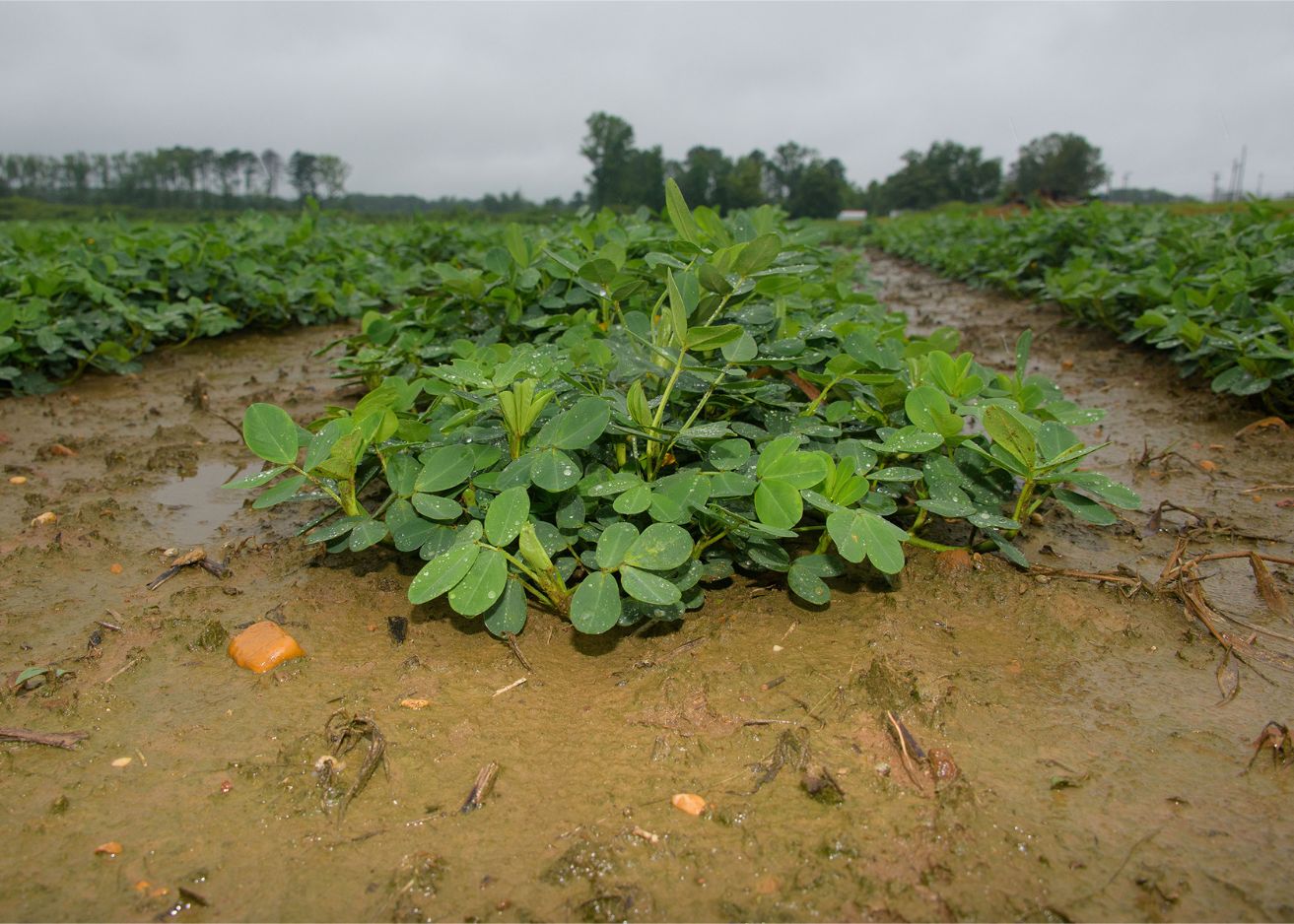
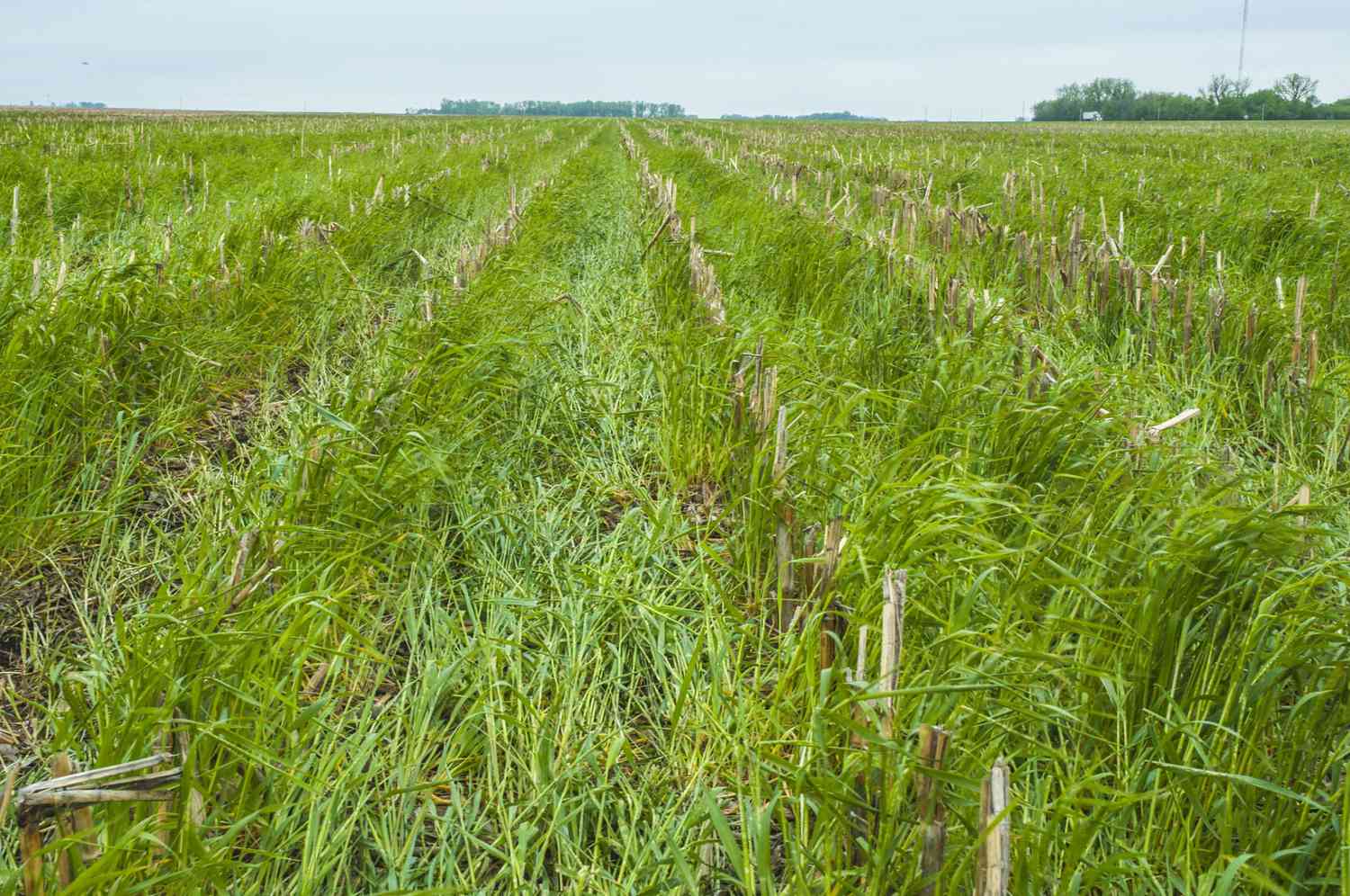



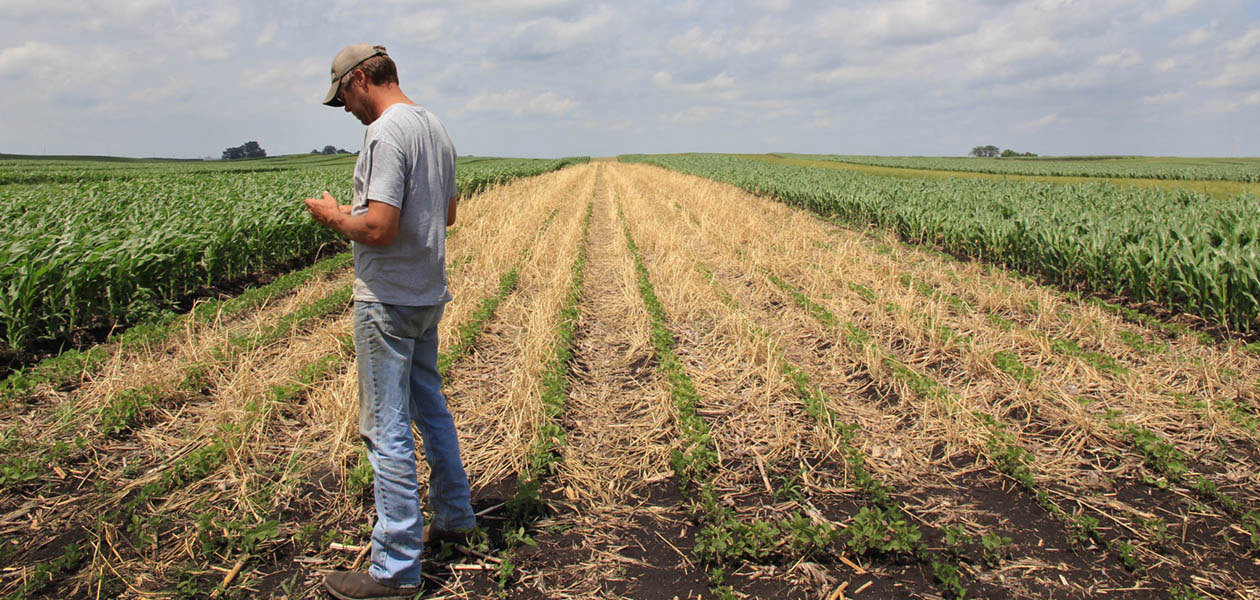





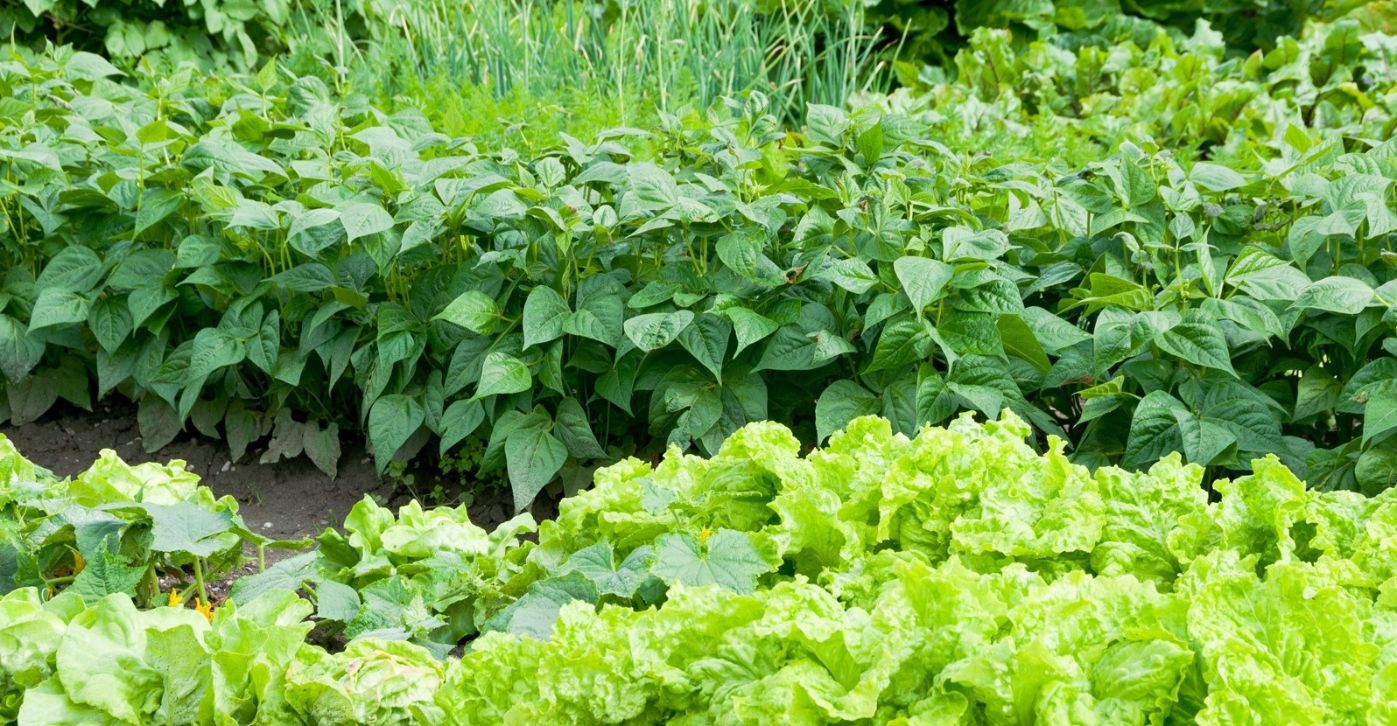

0 thoughts on “Why Are Legumes Important In Crop Rotation”